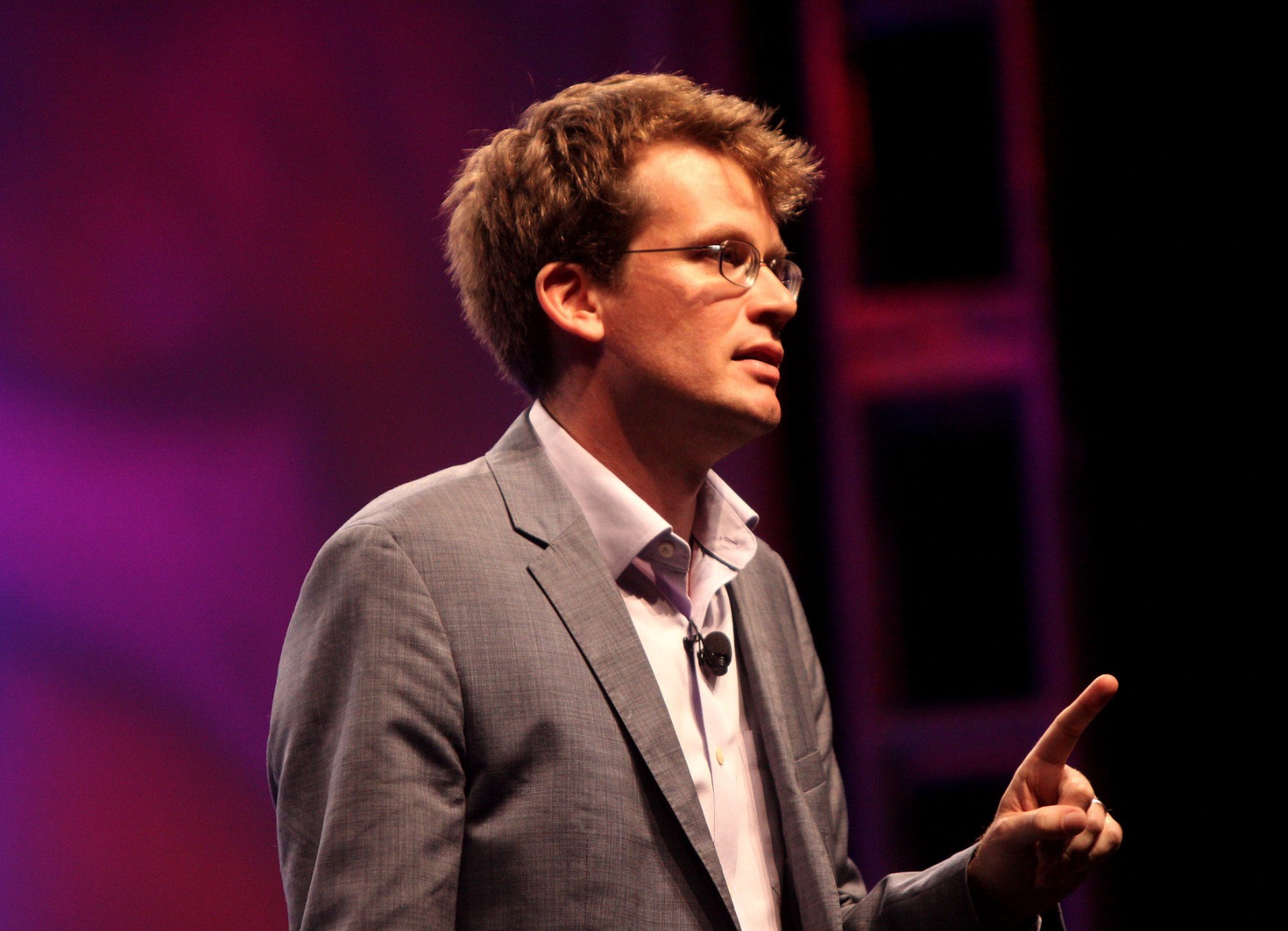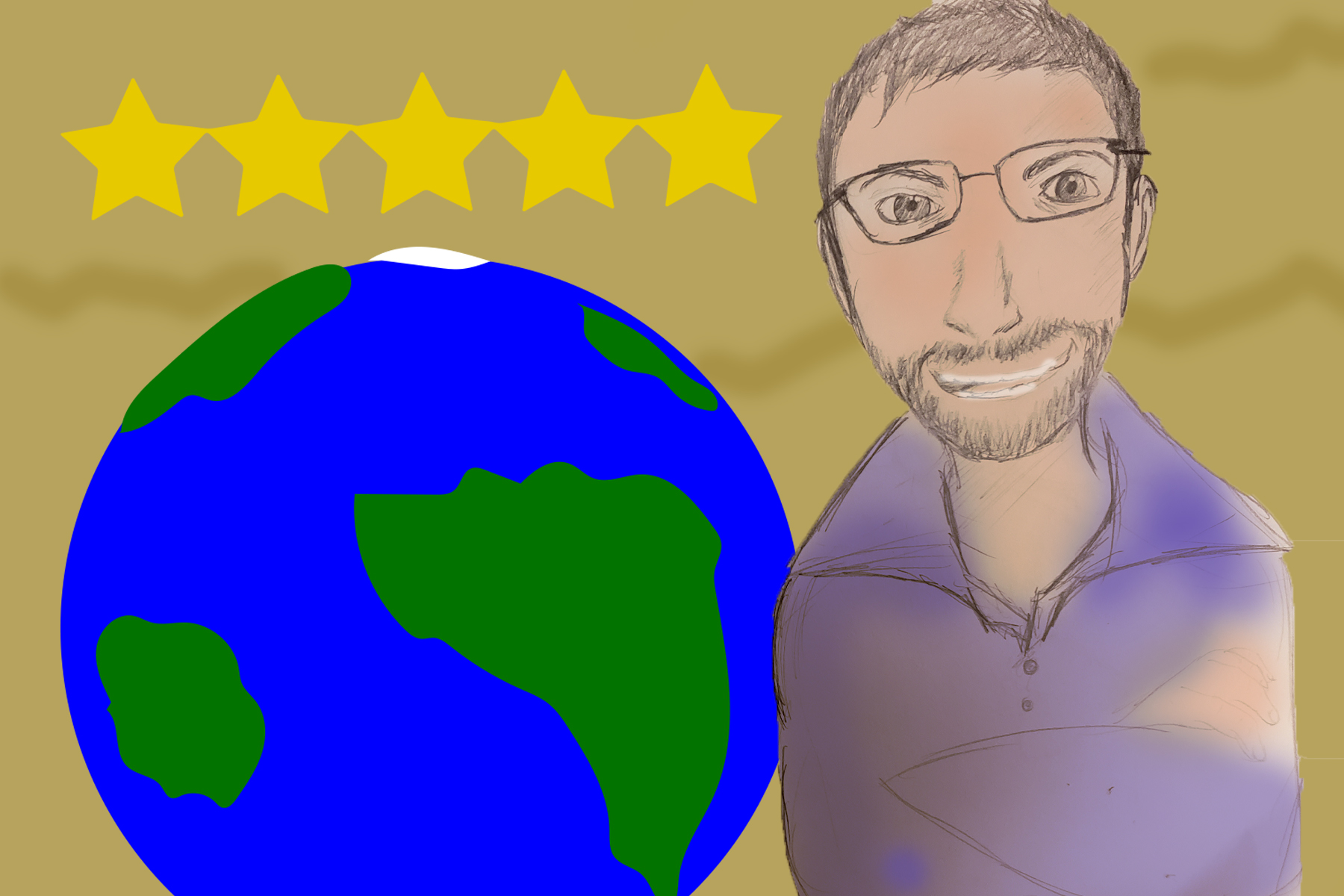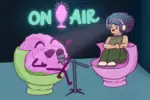Earth has been around for quite a long time, but in the grand scheme of things, humans have not. Modern man has existed for only about 200,000 years of Earth’s whopping 4.5 billion, and in just these recent few millennia, human life has drastically altered the planet it lives on.
John Green, the lauded young adult author and YouTube mogul, talks about this phenomenon in his podcast, “The Anthropocene Reviewed.” In it, Green gives essay-like reviews on pretty interesting topics, many of which seem disconnected at first and can often lead listeners to ask, “Why is he talking about this?”
Most of the things he highlights are indeed random, and that’s because listeners of “The Anthropocene Reviewed” can send in their own topic for review, thus leaving Green with a melange of potential subjects, including everything from the history of Diet Dr. Pepper to the art of googling strangers.
Each episode is a ride of its own, and here are a couple of the best reviews that Green has given.
1. Piggly Wiggly
Piggly Wiggly is a supermarket chain that primarily operates in the Southern and Midwestern areas of the United States, and Green reviews the Southern institution on Episode 9 of “The Anthropocene Reviewed.”
He opens the review with a story about his great grandfather working at a grocery store in 1920. Back then, grocery stores worked a lot differently than they do now. They were full service, meaning a customer would typically walk in with a list of groceries and hand it to the grocer, who would then go through their store to get the items for the customer.
A customer’s groceries would be charged to their account, with buyers often unsure of whether they or not they would have enough money for their purchase. Unfortunately, Green’s great-grandfather’s store eventually closed because of the emergence of the self-service revolution, launched by Clarence Saunders.
Saunders was 35 when he hatched the concept of a grocery with no clerks or counters, but instead an array of aisles that customers would stroll along, picking their own food and searching for more items. Prices were a lot less complicated at Saunders’ store, because instead of using credit, buyers would pay immediately.
The biggest perk? Every item’s cost would be marked so that customers knew how much each product was, meaning they would no longer be afraid of being overcharged. For reasons that are still unknown to this day, Saunders named the store Piggly Wiggly.

The first Piggly Wiggly opened its doors in Memphis, in 1916, and because its success was through the roof, the next one opened three weeks later. After that, more and more locations were opened. Within a year, there were 350 stores throughout the U.S.
Because Piggly Wiggly changed the supermarket game, they had to change what was typically stocked on shelves as well. To save cost and reduce the amount of food going bad, Piggly Wiggly stocked less fresh produce than traditional stores. Prepackaged and processed foods increased in popularity and decreased in price, which resulted in a shift in the American diet.
While his concept was revolutionary, it was also new and the enterprise had fickle margins, so Saunders promoted his brand heavily. Using newspaper ads to lure shoppers, Piggly Wiggly quickly became the single largest newspaper advertiser in the country.
With business booming, there were over a thousand Piggly Wiggly stores around the U.S. by 1922. Shares on the company began popping up on the New York Stock Exchange, and Saunders was busy constructing a 36,000-square-foot mansion.
Alas, what goes up must come down. After some stores in the Northeast failed, stocks began to fall, which led Saunders to buy up remaining Piggly Wiggly stocks with money that was not his. Saunders eventually lost control of his dream and went bankrupt.
On “The Anthropocene Reviewed,” Green rated Piggly Wiggly 2 1/2 stars out of 5, but I give his review 5 stars.
2. Googling strangers
Green starts this review on “The Anthropocene Reviewed” with another anecdote, telling a story about how, as a kid, he never really had a “gift.” As he grew older, with increasing technology he discovered that his specialty was his knack for googling strangers. Even now, before attending an event, Green looks up anyone he can get a name on and, yes, he admits to knowing how weird the practice is.
The author also says that most of his findings are partly due to the fact that it is so horrifyingly easy to find information about almost anyone online simply through public records or profiles. Green also mentions the free storage of photos, video and an overall lack of privacy.
Green goes on to tell a story about his time working as a priest-in-training at a hospital. After witnessing what he thought was the death of a small child, Green grew disillusioned with the career and quit the job.
Later, he discovered that the child had survived and was now 18 years old. His parents were both still together, and the child had gone on to live a happy, fulfilling life, despite the horrific injuries that brought him into the emergency room as a 3-year-old.
Green had grappled with the child’s supposed death for years, and it was only his weird habit of googling strangers that allowed him to move on from the emotional event. On “The Anthropocene Reviewed,” Green gave the practice of googling strangers 2 1/2 stars. I give this review 1 star for making me feel so emotional.
I promise that other “The Anthropocene Reviewed” episodes are far more lighthearted than the ones mentioned above, so if you’re down to get enticed by Green’s captivating reading voice, prepare yourself for the last Thursday of every month on SoundCloud.
















